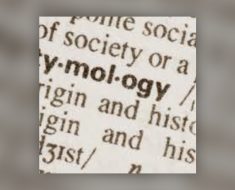
Introduction:
In the intricate tapestry of the human experience, silent struggles weave through the fabric of our lives, leaving an indelible mark. Anxiety and Post-Traumatic Stress Disorder (PTSD) emerge as profound threads in this complex narrative, each demanding recognition and understanding. This exploration aims to unravel the intricacies of these silent struggles, offering comprehensive insights into both comprehending and navigating the challenging landscapes of anxiety and PTSD.
1. Understanding Anxiety:
Anxiety, in its myriad forms, is an inherent part of the human condition, a complex emotional state that extends beyond mere fleeting worries or nervousness. It is a pervasive response to stress, and when this response becomes chronic or disproportionate, it transforms into various anxiety disorders that significantly impact one’s well-being. Exploring effective treatment for anxiety is essential in addressing the challenges associated with these disorders.
A. Definition and Types:
At its core, anxiety is a natural and adaptive response to stressors, alerting us to potential threats. However, when this response becomes overwhelming and persistent, it can give rise to a spectrum of anxiety disorders. These disorders encompass a broad range, from generalized anxiety and social anxiety to panic disorders and specific phobias, each presenting unique challenges for those affected.
B. Root Causes and Triggers:
Delving into the origins of anxiety involves a nuanced examination of both biological and environmental factors. Genetic predispositions and variations in brain chemistry contribute to an individual’s susceptibility. Simultaneously, external factors such as trauma, chronic stress, or a combination of life events play a crucial role in triggering and exacerbating anxiety.
C. Recognizing Symptoms:
Anxiety’s manifestations are not confined to the abstract realms of the mind; they extend into the physical and behavioral realms. Understanding these physiological symptoms, such as increased heart rate, muscle tension, and restlessness, along with behavioral indicators like avoidance or obsessive-compulsive behaviors, is crucial for early recognition and targeted intervention.
Furthermore, exploring the cognitive symptoms, such as excessive worry or irrational fears, provides a more comprehensive understanding of the intricate tapestry that anxiety weaves in an individual’s mental landscape.
2. Unraveling PTSD:
Post-Traumatic Stress Disorder is a complex tapestry woven from the threads of trauma, often shrouded in silence due to the pervasive stigma surrounding mental health issues.
A. Definition and Trauma:
Post-traumatic stress disorder (PTSD) emerges as a response to a traumatic event, where the mind becomes a battlefield haunted by distressing memories. Understanding the diagnostic criteria and the diverse forms of trauma that can lead to PTSD is paramount in developing effective strategies for managing and mitigating its impact.
B. The Impact on Daily Life:
PTSD doesn’t confine itself to the traumatic moment; its effects permeate everyday life, influencing emotions, relationships, and one’s overall sense of well-being. Recognizing the emotional consequences, such as heightened anxiety, depression, or emotional numbness, and navigating interpersonal challenges is essential in addressing this pervasive struggle.
Additionally, exploring the cognitive impact of PTSD, including intrusive thoughts, nightmares, and hypervigilance, provides a deeper understanding of the multifaceted nature of this mental health challenge.
C. Coping Mechanisms:
Individuals grappling with PTSD often develop coping mechanisms to navigate their internal landscape. The delicate balance between avoidance and confrontation becomes a significant aspect of managing the day-to-day challenges associated with PTSD. Coping mechanisms might include cognitive strategies, behavioral interventions, and seeking social support to foster resilience.
Exploring the role of coping mechanisms in more detail, such as the distinction between adaptive and maladaptive strategies, sheds light on the nuanced process of navigating life with PTSD. Furthermore, understanding the potential long-term effects of these coping mechanisms contributes to a more comprehensive grasp of the individual’s journey towards healing.
3. Managing Silent Struggles:
Breaking the silence surrounding anxiety and PTSD requires a multifaceted approach that involves acknowledging, communicating, and seeking support.
A. Breaking the Silence:
Silence can be a formidable barrier to healing. Encouraging open communication about mental health is a crucial step in dismantling the stigma that often shrouds anxiety and PTSD. Sharing experiences and stories can foster empathy and understanding, creating a supportive environment that promotes recovery.
To delve deeper, exploring the impact of cultural and societal factors on the perpetuation of silence surrounding mental health contributes to a more nuanced understanding of the barriers individuals face in expressing their struggles.
B. Seeking Professional Help:
Recognizing the need for professional support is a significant milestone in managing silent struggles. Therapy, encompassing various approaches such as cognitive-behavioral therapy (CBT) and exposure therapy, plays a pivotal role in providing coping strategies and fostering resilience. Seeking help is not a sign of weakness but a courageous step towards reclaiming one’s mental well-being.
Exploring the various modalities within therapy, such as the therapeutic alliance and the incorporation of medication in certain cases, offers a more comprehensive picture of the diverse and personalized treatment options available.
C. Self-Care Strategies:
In addition to professional help, incorporating self-care strategies into daily life is instrumental in managing anxiety and PTSD. Mindfulness practices, meditation, engaging in hobbies, and other holistic approaches contribute to building resilience and navigating the ongoing journey of healing. Self-care is an ongoing commitment to nurturing one’s mental and emotional well-being.
Furthermore, exploring the connection between physical well-being and mental health, including the role of exercise and nutrition, provides a holistic perspective on the multifaceted nature of self-care in the context of anxiety and PTSD.
4. The Role of Social Support:
The journey of understanding and managing anxiety and PTSD is not meant to be solitary. The significance of a robust support system cannot be overstated. Friends, family, and the broader community play a vital role in creating a space where individuals can share their struggles without fear of judgment. Social support acts as a buffer against the isolating effects of silent struggles, providing comfort and encouragement.
To elaborate further, exploring the dynamics of peer support groups, online communities, and the importance of empathy in social interactions enhances our understanding of the various layers that constitute a strong support network.
5. Empowering Through Education:
Education serves as a powerful tool in dispelling myths and misconceptions surrounding anxiety and PTSD. Increased awareness fosters a more empathetic and informed society, breaking down barriers that perpetuate the stigma associated with mental health. Education empowers individuals to seek help without reservation, creating an environment conducive to understanding and acceptance.
To delve into this, exploring the role of educational programs, advocacy initiatives, and the integration of mental health education into school curricula provides insight into the broader societal shifts needed to create an environment that supports those dealing with anxiety and PTSD.
Conclusion:
Silent Struggles: Understanding and Managing Anxiety and PTSD is an exploration into the depths of the human psyche, where battles are fought silently, yet courageously. By unraveling the complexities of anxiety and PTSD, we hope to dispel the shadows that often cloak these struggles. This journey is not just about awareness but a call to action—an invitation to break the silence, seek help, and embark on a path toward healing, understanding, and resilience. It is a testament to the strength that lies within every individual facing these silent struggles, a reminder that, through understanding, support, education, and self-care, a brighter and more resilient future awaits.




